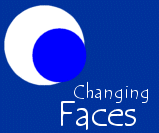
Final Report: Background
Our project has covered the period from the adult literacy campaign of the early 1970s to the launch of the Skills for Life Campaign at the end of the 1990s. The original literacy campaign, Right to Read, was well documented (Charnley and Jones, 1978; Hargreaves, 1980) and since then some limited historical reviews have been published, notably Withnall, 1994; Street, 1995; Hamilton, 1996; Hamilton and Merrifield, 1999. Whilst some monitoring figures were kept by national agencies, the statistical record of the field is extremely patchy. Estimates of need have risen from 2 million in the original “Right to Read” campaign (see BAS 1974, p. 4) to the 7 million based on UK cohort studies (Bynner & Parsons, 1997) and the International Adult Literacy Survey (OECD 1997, 2000).
Before the Right to Read Campaign, Adult Literacy was barely recognised as an area for public policy and funding. Just 5,000 adults were estimated to be receiving help with reading and writing in England and Wales (Haviland 1972) . There was no legitimising research or body of good practice. There were precursors in self-help and working class education movements of the 19 th century. Since 1948, UNESCO had promoted adult literacy in developing countries without formal schooling systems. The British army had engaged in basic education since wartime conscription. Practitioners recruited through the Right to Read campaign drew on the resources and discourses they were familiar with from their previous experience (especially in primary and special needs education and – in the case of ESOL – from the field of teaching English as a foreign language.) They adapted these resources to invent a new field of practice, which has gradually gained in status and legitimation across the period we have studied. With legitimation comes mainstreaming, standardisation and formalisation of the service. This trend has accelerated rapidly under the Skills for Life Strategy since 2000.
A national development agency provided visibility and leadership but for much of the period there was little that could properly be called “national policy” directed specifically at adult literacy, numeracy and ESOL. This meant that developments largely depended either on LEA policies and the work of local activists or on other national (or European) social policy initiatives that filled the lacuna of ALLN policy. In a marginalised field not used to large funding, practitioners and policy actors have had to look to other social projects and sources of funding. The social policy initiatives of special relevance to the development of ALLN have been:
- Educational reform in the school and post-compulsory education and training sectors
- Economic policy and especially the management of unemployment in relation to this
- Immigration policy and related issues of language policy, citizenship and national identity
- Changes in special educational needs and equal opportunities policies more generally in relation to ethnicity, gender and disability
- Developments in new computer technologies
- Approaches to penal education and policy
In international terms the main agencies have been UNESCO, the European Union (especially the European Social Fund) and the Organization for Economic Co-operation and Development (OECD). Developments in the US have been influential, and Australia’s Language and Literacy Policies of the 1990s presented a counterpoint to the more piecemeal developments in the UK during that time (Lo Bianco and Freebody, 1997).
We are analysing a complex field in relation to policy, organizational change and an emerging practice which is located in a much wider arena of social action. We have used different frameworks of analysis to do justice to this complexity:
- Time is a central organizing framework, juxtaposing the public with the personal and more local timelines
- Location is also important, analysing developments from an international, national, regional, local perspective
- Individual life histories of “trajectories” for people or organisations.
- Key moments that people mention are moments of tension or conflict that crystallise bigger underlying issues and we have found it particularly useful to focus on these, and the ways they have been managed.
- There are a number of recognisable and competing discourses in the field and we use Critical Discourse Analysis to explore a set of common underlying issues: how different social actors have viewed learners, tutors, policy actors, the teaching and learning process, institutional contexts, and the goals of the field.
The study is underpinned by a situated social practice view of literacy and learning that enables us to interrogate and link literacy-related activities in the contexts of policy, educational practice and everyday practice (Lave and Wenger, 1991; Holland and Lave, 2001). It draws on insights from actor network theory (Law, 1994) in seeing ALLN as a “social project” in the process of being formed and identifying how actors and resources are mobilised to ‘solidify’ it. The emphasis is on policy flux and permeability in relation to other competing or complementary social projects. We also use notions of policy networks (Yeatman, 1998), discursive communities (Fairclough, 2003; Wodak, 2001) and governmentality (Newman, 2001), seeing the three stakeholder groups as overlapping communities of practice working within a changing political environment.
Because of the nature, and lack, of national policy initiatives at different points during this history we searched for a long time for an appropriate approach to policy analysis and have adopted a “deliberative policy analysis” (Hajer and Wagenaar 2003) deriving from earlier approaches including Fisher and Forester,1993 (the argumentative turn), Hogwood and Gunn, 1984 (policy-making in the real world) and Ball, 1990) (policy as both text and context). Deliberative policy analysis enables us to examine the role of dispersed networks and non-institutionalised policy activism; the dialectical and discoursal nature of policy formation and development, assuming value pluralism and identifying social interaction as a means of managing the enduring tensions that policy has to resolve into action; and to acknowledge the importance of everyday social practice in the accomplishment of policy.